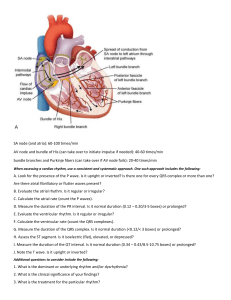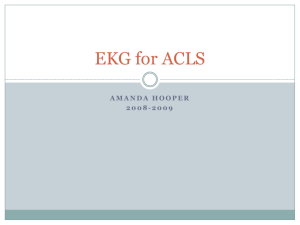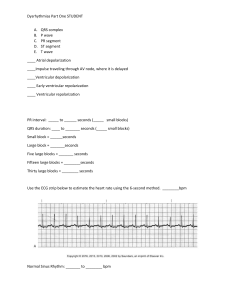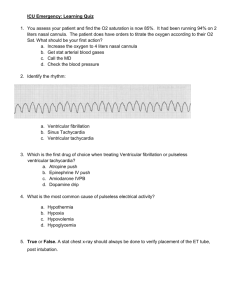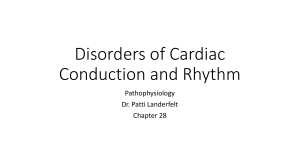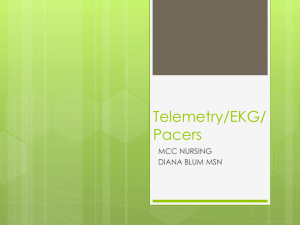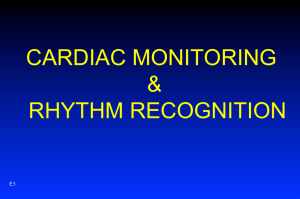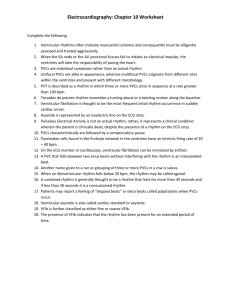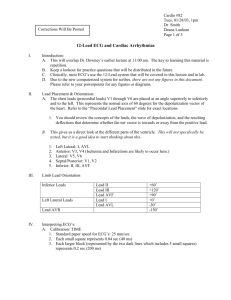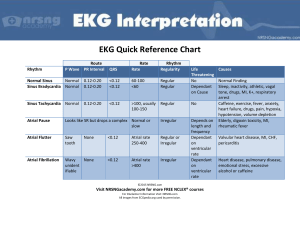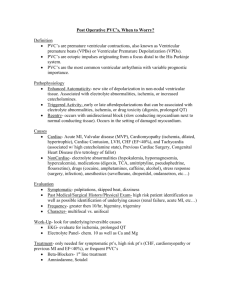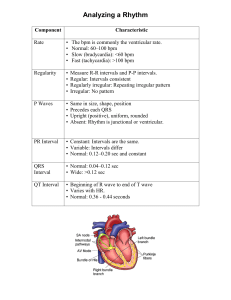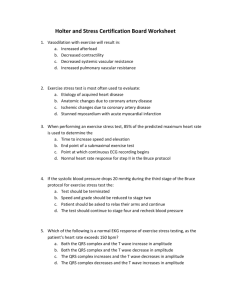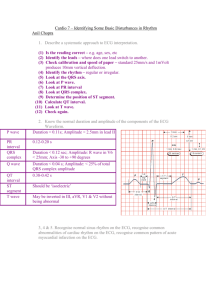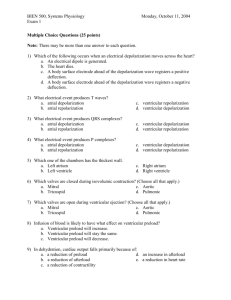Aspects of Emergency Response
advertisement
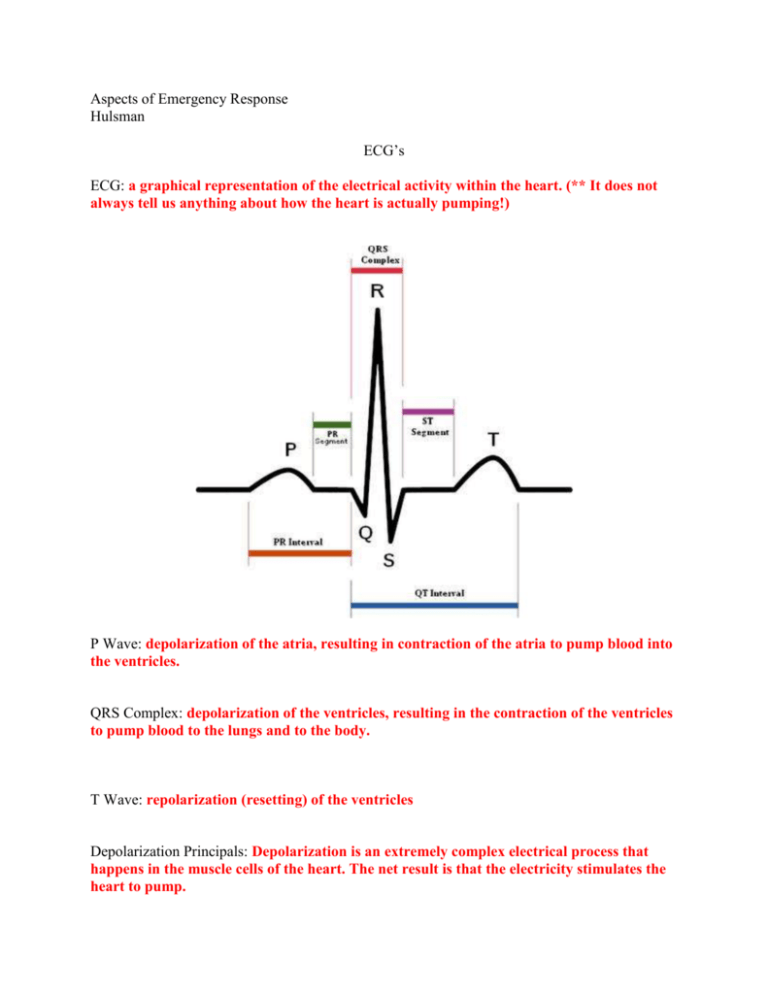
Aspects of Emergency Response Hulsman ECG’s ECG: a graphical representation of the electrical activity within the heart. (** It does not always tell us anything about how the heart is actually pumping!) P Wave: depolarization of the atria, resulting in contraction of the atria to pump blood into the ventricles. QRS Complex: depolarization of the ventricles, resulting in the contraction of the ventricles to pump blood to the lungs and to the body. T Wave: repolarization (resetting) of the ventricles Depolarization Principals: Depolarization is an extremely complex electrical process that happens in the muscle cells of the heart. The net result is that the electricity stimulates the heart to pump. Rate: How many complexes per minute… The guide to the left gives a general idea of the speed of a heart rate. Mark a QRS complex, and then see how far away the next one is. What is the rate?Approximately 150 beats per minute (BOM) What is the rate? Approx 37 BPM What is the rate? Approx 75 BPM Normal Sinus rhythm: considered “Normal” heart rhythm. Probably 90% of people you see have this rhythm. The rate must be between 60-100 BPM, P, QRS, and T waves are all present and normal, and the rhythm is regular. Bradycardia: Any heart rate below 60 BPM is considered slow (bradycardia) Slow heart rates generally drop blood pressure. Rates less than 30 usually cause people to lose consciousness, and are not able to sustain adequate perfusion (SHOCK!) Tachycardia: Technically, any rate above 100 BPM Fast heart rates decrease ventricular filling time, so less blood is pumped to the body. Can result in a drop in blood pressure. Rates above 180-190 often cause dizziness and can result in lose of consciousness. Extremely fast rates can result in loss of pulses altogether (cardiac arrest). Ventricular Tachycardia: Ventricular Tachycardia (V-Tach) may or may not produce pulses, but has a bad habit of devolving into ventricular fibriallation. This is a SHOCKABLE RHYTHM! Ventricular Fibrillation: “Quivering” heart. Chaotic electrical activity means that the chambers do not pump at all… Cardiac Arrest. Can begin instantly (Sudden Cardiac Arrest) This is also a SHOCKABLE RHYTHM! Asystole: “Dead Heart” Very bad sign. People rarely come back from asystole. There is no electrical activity in the heart, no pacemaker, no contractions. Nothing. Ectopy: Often called “Skipped beats” or “Extra Beats”. Caused by over-excitation of individual heart cells. They are very common, and most are harmless unless there is heart damage or heart attack. Can be caused by several factorsincluding: • Anxiety • Caffeine or other drugs • Heart attack or heart damage Premature Atrial Contractions: Premature Atrial contractions (PAC’s) Early excitation of the atrial myocardium. Common and almost always harmless. Premature Ventricular Contractions: Premature Ventricular contractions (PVC’s) Early excitation of the ventricular myocardium. Somewhat common and almost always harmless, as long as there are no structural heart problems.
